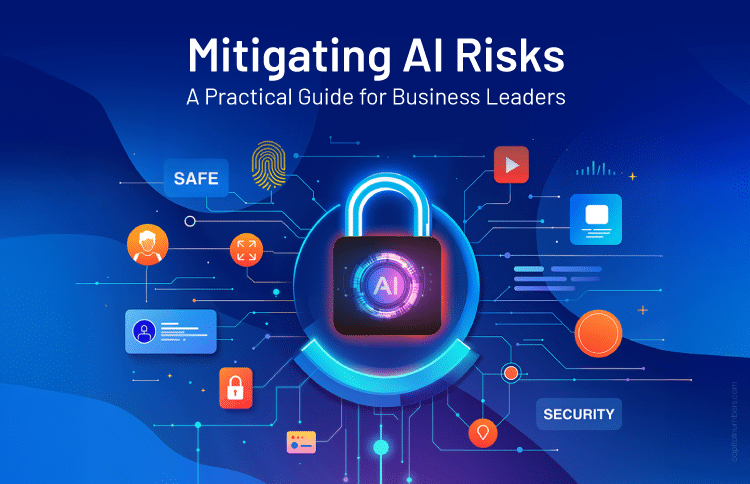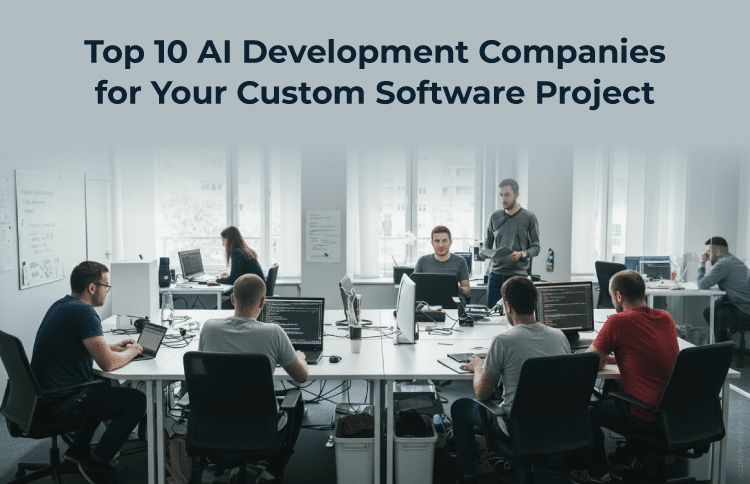Mitigating AI Risks: A Practical Guide for Business Leaders
Table of Contents
Artificial Intelligence (AI) is no longer a futuristic concept – it’s a business reality. From predictive analytics to automated customer service, AI technologies are driving operational efficiency, enhancing decision-making, and unlocking new revenue streams. For business leaders, adopting AI is no longer optional; it’s a competitive necessity.
However, with great potential comes significant risk. Poorly designed or implemented AI can lead to biased decisions, security breaches, legal challenges, and reputational damage. As AI adoption accelerates, the ability to identify, assess, and mitigate AI-related risks is becoming a core leadership skill.
This article provides a practical, business-focused approach to mitigating AI risks, ensuring your organization can harness the benefits of AI without falling into its pitfalls.
Understanding AI Risks
Before leaders can mitigate AI risks, they must first understand them. AI risks can be grouped into several key categories:
1. Bias and Discrimination
AI systems learn from historical data, which often contains societal biases. Without intervention, these biases can manifest in hiring tools, credit scoring systems, or healthcare diagnostics – leading to unfair outcomes and potential legal action.
2. Data Privacy and Security
AI relies heavily on data, often including sensitive personal or proprietary information. Mishandling this data can result in privacy violations, breaches, and non-compliance with regulations like GDPR or CCPA.
3. Lack of Transparency
Many AI models, especially deep learning systems, operate as “black boxes,” making it difficult to explain their decisions. This lack of transparency can hinder trust and make regulatory compliance challenging.
4. Operational Failures
AI systems can fail unexpectedly due to flawed algorithms, poor training data, or unforeseen scenarios – leading to operational disruptions.
5. Ethical and Reputational Risks
Using AI in ways perceived as unethical can damage brand reputation, even if the system operates legally.
Understanding these risk areas is the first step toward building a robust mitigation strategy.
You May Also Read: From Data to Decisions: How You Can Use AI to Revolutionize Your Business Strategy
Why Mitigation is a Business Priority
Mitigating AI risks is not just a technical concern – it’s a business imperative.
- Regulatory Compliance – Avoid fines and penalties by adhering to evolving AI-related regulations.
- Customer Trust – Transparent, fair AI systems foster loyalty and strengthen brand reputation.
- Operational Continuity – Reliable AI reduces downtime and business disruptions.
- Competitive Advantage – Companies that manage AI responsibly can innovate faster and scale with confidence.
For business leaders, proactive risk management is not just about avoiding problems – it’s about unlocking AI’s full potential while maintaining control.
A Practical Approach to Mitigating AI Risks
Business leaders don’t need to be data scientists to manage AI risks effectively. They need a structured, practical approach that integrates risk management into the organization’s AI strategy.
Step 1: Establish AI Governance
- Create an AI governance framework that defines roles, responsibilities, and decision-making processes.
- Include cross-functional stakeholders – IT, legal, compliance, HR, and operations – to ensure a holistic view of risks.
- Develop clear AI policies covering ethical guidelines, data usage, and accountability.
Step 2: Conduct Risk Assessments
- Identify all AI systems in use or in development within the organization.
- Assess each system for potential risks across bias, privacy, security, and operational reliability.
- Prioritize risks based on potential impact and likelihood.
Step 3: Ensure Data Quality and Fairness
- Use diverse, representative datasets to train AI models.
- Continuously monitor outputs for signs of bias or unfairness.
- Implement fairness metrics and automated testing to detect and correct biased outcomes early.
Step 4: Enhance Transparency and Explainability
- Where possible, use explainable AI (XAI) techniques to make decisions understandable to stakeholders.
- Provide clear documentation on how AI models work, what data they use, and how decisions are made.
- Enable human oversight for high-stakes decisions.
Step 5: Strengthen Security Measures
- Protect AI systems from cyberattacks by securing data pipelines, APIs, and model files.
- Monitor for adversarial attacks that attempt to manipulate AI outputs.
- Implement strict access controls for sensitive AI systems.
Step 6: Develop Incident Response Plans
- Prepare for AI failures with predefined response protocols.
- Train teams to handle incidents quickly, including rollback strategies and communication plans.
- Learn from incidents to improve future resilience.
Step 7: Engage in Continuous Monitoring
- Regularly review AI models for performance, fairness, and security.
- Use monitoring dashboards to track key metrics in real time.
- Adapt and retrain models as business needs and external conditions change.
Building a Culture of Responsible AI
Mitigating AI risks is not a one-time project – it’s an ongoing process that requires a cultural shift.
Leadership Commitment: Executives must champion responsible AI use and allocate resources for governance, monitoring, and training.
Employee Training: Educate employees on AI basics, risks, and ethical considerations. When more people understand AI, they can spot potential issues early.
Open Communication: Encourage teams to report concerns without fear of backlash. Transparency within the organization fosters accountability.
External Collaboration: Engage with regulators, industry groups, and academic institutions to stay informed on best practices and evolving standards.
Learning from Real-World Examples
Several high-profile cases illustrate the consequences of ignoring AI risks:
- Biased Hiring Algorithms – A major tech company had to scrap its recruitment AI after it was found to discriminate against female candidates.
- Faulty Credit Scoring – An AI-driven lending platform faced lawsuits when its credit assessments were found to favor certain demographic groups unfairly.
- Deepfake Misinformation – Businesses have suffered reputational damage from AI-generated content falsely attributed to them.
These incidents highlight the importance of proactive, structured risk management.
The Role of Regulation and Standards
Global regulations are evolving quickly to address AI risks. Business leaders should track and comply with:
- EU AI Act – Categorizes AI by risk level and imposes requirements for high-risk systems.
- U.S. AI Bill of Rights – Outlines principles for safe and fair AI.
- ISO/IEC AI Standards – Provide frameworks for AI governance and quality management.
Staying compliant not only avoids legal issues but also positions companies as trustworthy AI adopters.
You May Also Read: Building AI That Grows: Scalable Solutions for Tomorrow’s Demands
The Way Forward
AI will continue to transform industries, creating new opportunities and efficiencies. But without careful management, it can also introduce serious risks. Business leaders must adopt a proactive, structured approach to identifying, assessing, and mitigating these risks.
By implementing strong governance, ensuring data fairness, enhancing transparency, and fostering a culture of responsible AI, organizations can harness the power of AI confidently and ethically.
The bottom line: Mitigating AI risks is not about slowing down innovation – it’s about enabling sustainable, trustworthy innovation that benefits both the business and society.


















